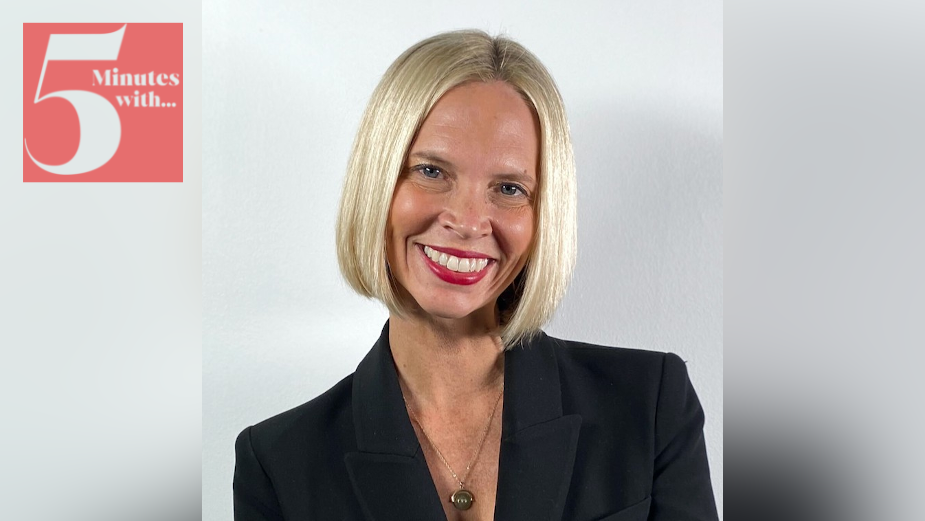
5 Minutes with… Erin Allsman

Erin Allsman is president at Brownstein Group, Philadelphia's largest and longest-running independent ad agency. Elevated from her previous managing director position in January, Erin is the first-ever non-family member to hold the title at Brownstein.
Erin joined the agency's PR department 16 years ago. She quickly rose to the position of director of public relations, before being promoted to managing director in 2017, overseeing Brownstein's creative, public relations, brand strategy, social media, digital practices, business development, agency communications, HR and long-term strategic planning. Under her leadership, Brownstein has experienced double-digit growth, won national accounts and received industry-wide recognition, including being named a Small Agency of the Year by Ad Age.
Erin's leadership will support the continued evolution of the Brownstein Group brand, which in recent years has expanded to become a network of specialty agencies — Brownstein (strategy + creative), Nucleus (digital marketing), Red Thread PR, and Studio 215 (content production).
With the Brownstein Group network seemingly poised for continued transformation and growth, LBB's Addison Capper chatted with Erin to find out more.
LBB> Where did you grow up and what sort of kid were you? How did you feel about advertising?
Erin> I grew up in the Philadelphia and Wilmington, Delaware suburbs. I was a happy and very social child, but also as the first-born of three girls, pretty type-A from a young age. I’ve been interested in advertising and communications for as long as I can remember. I was very influenced by MTV and fashion magazines growing up in the ‘80s and ‘90s. Everything from the talent and editorial content, to the ads and the brands they represented fascinated me.
LBB> How did you wind up in advertising? Was it a planned thing or more a happy accident?
Erin> As a kid, I always had the idea that I might work at an ad agency, but I knew nothing about the profession or how to break in. My strengths were more in crafting a narrative as opposed to headlines and big ideas, so I pursued a master’s in mass communication to learn more about media, journalism and advertising. I began to be intrigued by PR, as it represented an intersection between the brand world and the editorial side. So, I guess you could say that advertising was still a happy accident, because I had intended to focus on PR for the duration of my career until Marc Brownstein encouraged me to take on a larger role at the agency.
LBB> What was an important moment in your career path?
Erin> Becoming a parent, hands down. Once I became a parent, everything at work got easier (let me be clear, life got infinitely harder!), because I gained a new perspective that made me a better boss. I attribute this to the fact that, while we make many decisions a day at the agency, nothing compares to the quick decision-making that’s required to raise children and the patience needed to always be the calmer presence in the situation. This experience has given me a sense of balance that I simply would never have otherwise – so I thank my daughters for revitalising my career path.
LBB> You’re the first ever non-family member to become president of Brownstein - how are you shaping that role and what are your main focuses?
Erin> Excuse the Ted Lasso reference, but I’m shaping this role to be the chief ‘believe’ officer. I want every employee across our network of agencies to know that I believe deeply in our potential and want to see us reach for the stars. I want them to see me as their number one fan and biggest supporter, and that it is genuine. If I do that, then my team will know that all the initiatives, programmes, ideas and even the tough stuff that sometimes comes along with this gig will be done with their best interest in mind. When people feel they have that kind of support, they give their best back to you. And that’s how we achieve success for our clients, which is ultimately success for the business. To me, it's all about the team.
LBB> You led the team that created the Brand Longevity Lab - what can you tell me about that project and its main goals?
Erin> Marketers today know that brand longevity is important – however, the decisions they’re making are very much short-term. To solve this challenge and help them think more long-term, we created the Brand Longevity Index. The research we compiled in conjunction with The Harris Poll is designed to help brands identify key drivers needed to build resilience in the marketplace. Following the research, our team also created the Brand Longevity Ecosystem, a model for understanding the big picture of brands, including internal and external elements that continually influence their success. And all of this lives in the Brand Longevity Lab: our proprietary resource hub where you can learn more about Brand Longevity, download our full whitepaper report co-authored with The Harris Poll and experience our research-based algorithm for creating unstoppable brands.
LBB> What key advice would you offer to brands to establish brand longevity?
Erin> Know your audiences – because today’s consumers are unlike any others of the past. With the compounding impacts of inflation and the ongoing pandemic, consumers are looking to interact with brands that take a stance around social recovery. To address this, brands should take a close look at their mission/values and make addressing societal issues a key component of marketing efforts. Additionally, consumers are mainly digital-first today – so brands need to meet them where they are by bridging the gap between the physical and digital worlds. This doesn’t mean leaving the physical world behind entirely; rather, finding the right balance between innovative tactics and traditional ones to encourage brand longevity.
LBB> Longevity doesn't necessarily mean 'stay the same’ - evolution is also important. How can a brand achieve this while still staying true to its core mission?
Erin> According to our research, brand heritage and technology/innovation are two of the most important drivers of longevity. While it seems like those elements would compete against one another, marketers should find the balance between staying in the past and moving towards a more innovative future, which can take shape across different elements of the brand, including the product, the customer experience or the brand itself.
LBB> Which projects/campaigns that you've been involved with are you most proud of and why?
Erin> Since my purview is the agency at-large, I’m most proud of the evolution our business has undergone in the last few years and the people who have worked tirelessly with me to get it there. We are nearly unrecognisable today compared to when I first started more than 15 years ago. I’m immensely proud to have grown our PR business to four times its former size, and that I now get to watch Laura Emanuel, my 15-year ride-or-die protégé, take it to new heights as Red Thread PR. I’m beyond proud of the bond I’ve built with our CCO, Gary Greenberg, and the trust we’ve established in one another, which I believe has been a critical component of the elevation of our creative product.
But, if I have to pick a campaign, there’s no doubt our work with NJM Insurance has been a game-changer for our agency and our client’s business. While I can’t personally take credit for the big idea in ‘No Jingles or Mascots’ (shout-out to Scott Cirlin for that!) or the catalogue of amazing executions our creative team has produced, I do work very closely with our client on many facets of the business and I place tremendous value in our relationship. You know your campaign has arrived when your nine-year-old tells her teacher that her mom works at ‘No Jingles or Mascots’!
LBB> Outside of work, what are your main passions?
Erin> I am my children’s biggest cheerleader in all their endeavours. I exercise and do yoga, and also love to travel and dine out. I enjoy interior design - my 100+-year-old home is a labour of love and an ongoing project.












